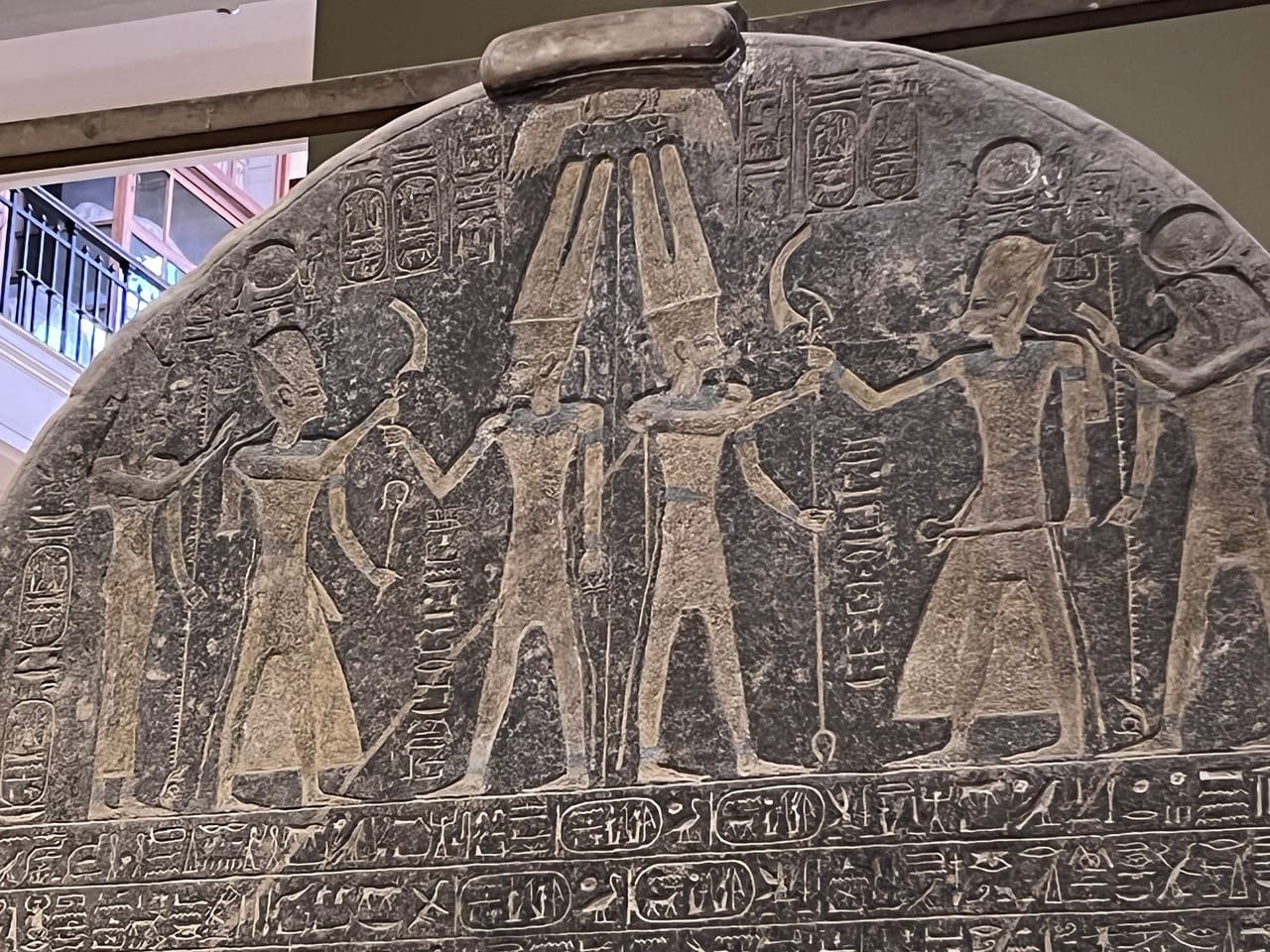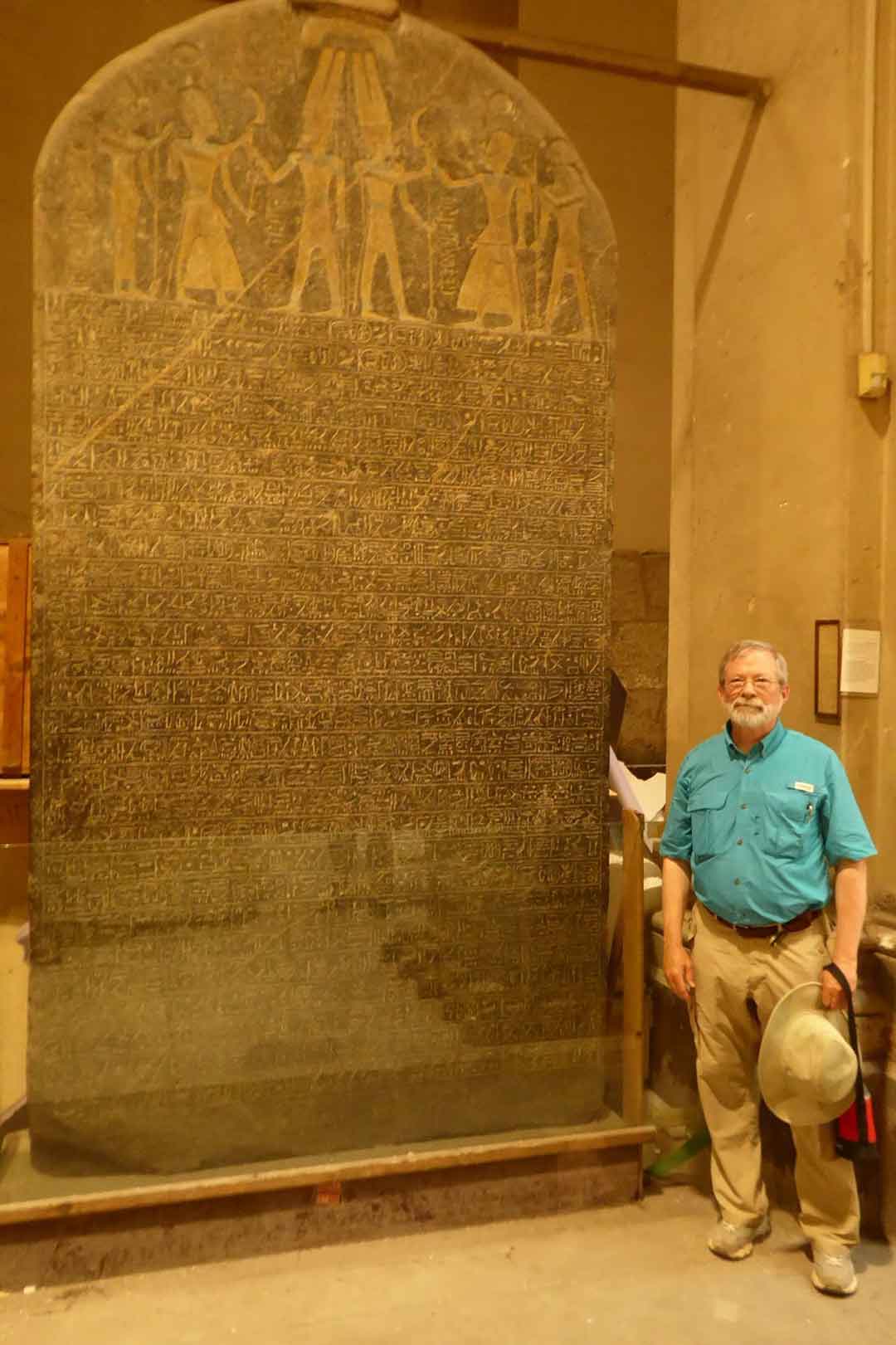Introduction
In the annals of ancient history, few artifacts hold as much significance as the Merneptah Stele. This ancient Egyptian inscription, dating back to the reign of Pharaoh Merneptah (1213-1203 BC), holds a unique place in the study of the ancient Near East. Why? It contains the earliest known reference to “Israel” in any Egyptian text.

The Merneptah Stele is a remarkable piece of historical evidence that sheds light on the emergence of ancient Israel and its place in the broader context of the ancient world. As one of the most important archaeological discoveries of the 19th century, this stone monument has captivated the imaginations of scholars and historians alike, offering a tantalizing glimpse into the complex tapestry of the ancient Near East.
In this blog post, we will delve into the fascinating history and significance of the Merneptah Stele, exploring its discovery, its content, and the insights it provides into the early history of ancient Israel.
The Discovery of the Merneptah Stele
The Merneptah Stele was discovered in 1896 by the famous British archaeologist Flinders Petrie, who was excavating the ancient site of Thebes (modern-day Luxor) in Egypt. Petrie’s team unearthed the large granite slab, which had been reused as building material in a later structure.
The stele was found in a fragmented state, with several pieces scattered across the site. Petrie carefully collected the fragments and assembled the stele, revealing a well-preserved inscription that had been carved into the stone. This inscription, written in the ancient Egyptian hieroglyphic script, would go on to become one of the most important archaeological discoveries of the 19th century.

The Content of the Merneptah Stele
The Merneptah Stele is a victory stele, a type of monument commonly erected by Egyptian pharaohs to commemorate their military victories and achievements. The inscription on the stele is a lengthy text that details Pharaoh Merneptah’s military campaigns and his triumph over a coalition of enemies, including the mysterious “Israel.”

The relevant passage reads:
“Israel is laid waste, its seed is not; Hurru is become a widow because of Egypt. All lands are united, they are pacified; Everyone who was restless, he has been bound by the king of Upper and Lower Egypt: Merneptah, given life like Ra every day.”
This brief mention of “Israel” is the earliest known reference to the ancient Israelites in any Egyptian text. It is a remarkable discovery, as it provides tangible evidence of the existence of Israel as a distinct entity during the late Bronze Age, more than a century before the reign of King David.
Interpreting the Merneptah Stele
The discovery of the Merneptah Stele has sparked intense scholarly debate and analysis, as historians and archaeologists have sought to unravel the significance of this ancient inscription.
One of the key questions surrounding the stele is the precise nature of the “Israel” mentioned in the text. Some scholars argue that this reference is to a nomadic or semi-nomadic group, rather than a fully-fledged state or kingdom. Others contend that the “Israel” mentioned was a distinct political or social entity, perhaps a precursor to the later biblical kingdom of Israel.

Another point of discussion is the context in which the reference to “Israel” appears. The stele describes Merneptah’s military campaigns against a coalition of enemies, including the “Israel.” This suggests that ancient Israel was already established as a significant power in the region, capable of posing a threat to the mighty Egyptian empire.
Furthermore, the placement of the “Israel” reference within the broader text of the stele has led scholars to speculate about the nature of the conflict between Egypt and ancient Israel. Some interpret the passage as a direct military victory over the Israelites, while others see it as a more general reference to the disruption or displacement of Israelite communities within the broader regional conflicts of the time.
The Significance of the Merneptah Stele
The Merneptah Stele is a truly remarkable archaeological find, as it provides the earliest known textual evidence of the existence of ancient Israel. This discovery has had a profound impact on our understanding of the ancient Near East and the emergence of the Israelite people.
One of the key contributions of the Merneptah Stele is that it helps to establish a timeline for the development of ancient Israel. Prior to the discovery of this artifact, the earliest references to Israel were found in the biblical texts, which were often viewed with skepticism by some scholars. The Merneptah Stele, however, confirms that Israel was a distinct entity during the late Bronze Age, predating the biblical accounts by several centuries.

Moreover, the stele’s mention of “Israel” provides important insights into the broader political and social landscape of the ancient Near East. The fact that Egypt, a major regional power, felt the need to confront and defeat a group known as “Israel” suggests that the Israelites had already established themselves as a significant force in the region.
This discovery has also sparked renewed interest in the archaeological and historical study of ancient Israel, as scholars seek to uncover more details about the origins, development, and interactions of this enigmatic people. The Merneptah Stele has become a cornerstone of our understanding of the ancient Near East, and it continues to shape the ongoing debate about the early history of Israel.
The Merneptah Stele and the Bible
The Merneptah Stele has also had a significant impact on the study of the Bible and its historical context. The reference to “Israel” on the stele has been seen by some as corroborating the biblical accounts of the Israelites’ presence in the ancient Near East.
However, the relationship between the Merneptah Stele and the biblical narratives is complex and often debated. While the stele provides tangible evidence of the existence of an “Israel” during the late Bronze Age, it does not necessarily align with the specific details and chronology presented in the biblical texts.
![The Merneptah Stele, 1208 BCE. It contains the earliest textual reference to "Israel" and the only reference from Ancient Egypt. [1024x1378] : r/ArtefactPorn](https://upload.wikimedia.org/wikipedia/commons/f/f7/Merenptah_stele.jpg)
Some scholars argue that the “Israel” mentioned on the stele may not be the same as the Israelites described in the Bible, or that the two may have had different origins and trajectories. Others, however, see the Merneptah Stele as an important piece of evidence that supports the overall historical reliability of the biblical accounts.
Regardless of the precise relationship between the stele and the Bible, the discovery of the Merneptah Stele has undoubtedly influenced and enriched the ongoing scholarly discourse around the early history of ancient Israel and its place within the broader context of the ancient Near East.
Conclusion
The Merneptah Stele is a truly remarkable and significant archaeological discovery that has profoundly shaped our understanding of the ancient Near East and the emergence of ancient Israel. This ancient Egyptian inscription, dating back to the reign of Pharaoh Merneptah, contains the earliest known reference to “Israel” in any Egyptian text, providing tangible evidence of the existence of this enigmatic people during the late Bronze Age.
The discovery of the Merneptah Stele has sparked intense scholarly debate and analysis, as historians and archaeologists have sought to unravel the significance of this ancient inscription. From its potential relationship to the biblical narratives to its implications for the political and social landscape of the ancient Near East, the Merneptah Stele continues to captivate and intrigue researchers.
As we delve deeper into the history and significance of this remarkable artifact, we gain a richer understanding of the complex and interconnected world of the ancient Near East. The Merneptah Stele stands as a testament to the enduring power of archaeology to shed light on the past and to challenge our preconceptions about the origins and development of ancient civilizations.

